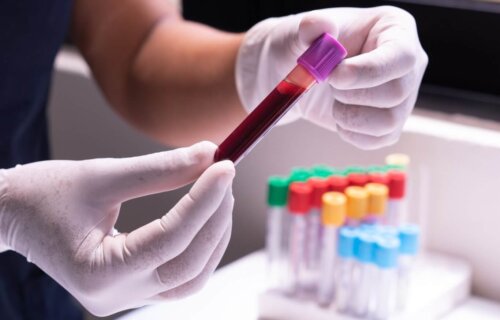SOLNA, Sweden — It continues to be a race against the clock to figure out how to detect Alzheimer’s disease early and slow its progression as much as possible. Scientists still don’t have all the answers, but a group of researchers from Karolinska Institute in Sweden have discovered that a sugar molecule could help predict disease onset in a simple blood test.
“The role of glycans, structures made up of sugar molecules, is a relatively unexplored field in dementia research,” says the study’s first author Robin Zhou, a medical student and affiliated researcher at the Department of Neurobiology, Care Sciences and Society (NVS) at the Karolinska Institute, in a media release. “We demonstrate in our study that blood levels of glycans are altered early during the development of the disease. This could mean that we’ll be able to predict the risk of Alzheimer’s disease with only a blood test and a memory test.”
So far, studies have shown that with this disease, brain neurons die, likely due to abnormal accumulations of the proteins amyloid beta and tau. As such, according to clinical trials, it’s important to start treatment as soon as possible before too many neurons die.

– stock.adobe.com)
High glycan levels could double Alzheimer’s risk
Previously, this team has shown a link between tau protein and glycan levels in Alzheimer’s patients, but the analyses only examined cerebrospinal fluid. Now, they’re using blood samples for more in-depth testing. By measuring blood levels for these sugar molecules, the researchers revealed that those with matching levels of glycans and tau were over twice as likely to develop Alzheimer’s-type dementia, the most common form of the disease.
They completed their work with 233 participants of the Swedish National Study on Aging and Care in Kungsholmen (SNAC-K). Study authors collected samples between 2001 and 2004 and monitored the participants regularly for signs of dementia and memory loss. The team followed up with this group for 17 years, in three to six-year intervals.
“We also show that a simple statistical model that take into account blood glycan and tau levels, the risk gene APOE4 and a memory test, can be used to predict Alzheimer’s disease to a reliability of 80 per cent almost a decade before symptoms such as memory loss appear,” says corresponding author Sophia Schedin Weiss, docent at NVS at the Karolinska Institute.
They are now continuing their analysis of blood samples from the rest of the SNAC-K participants, as well as with people from other national and international aging studies.
“We’re collaborating with researchers in primary care in Sweden to evaluate different biomarkers for dementia at primary health care centers,” says Dr. Schedin Weiss. “We hope that glycans in the blood will prove to be a valuable complement to current methods of screening people for Alzheimer’s disease that will enable the disease to be detected early.”
The findings are published in the journal Alzheimer’s & Dementia.

